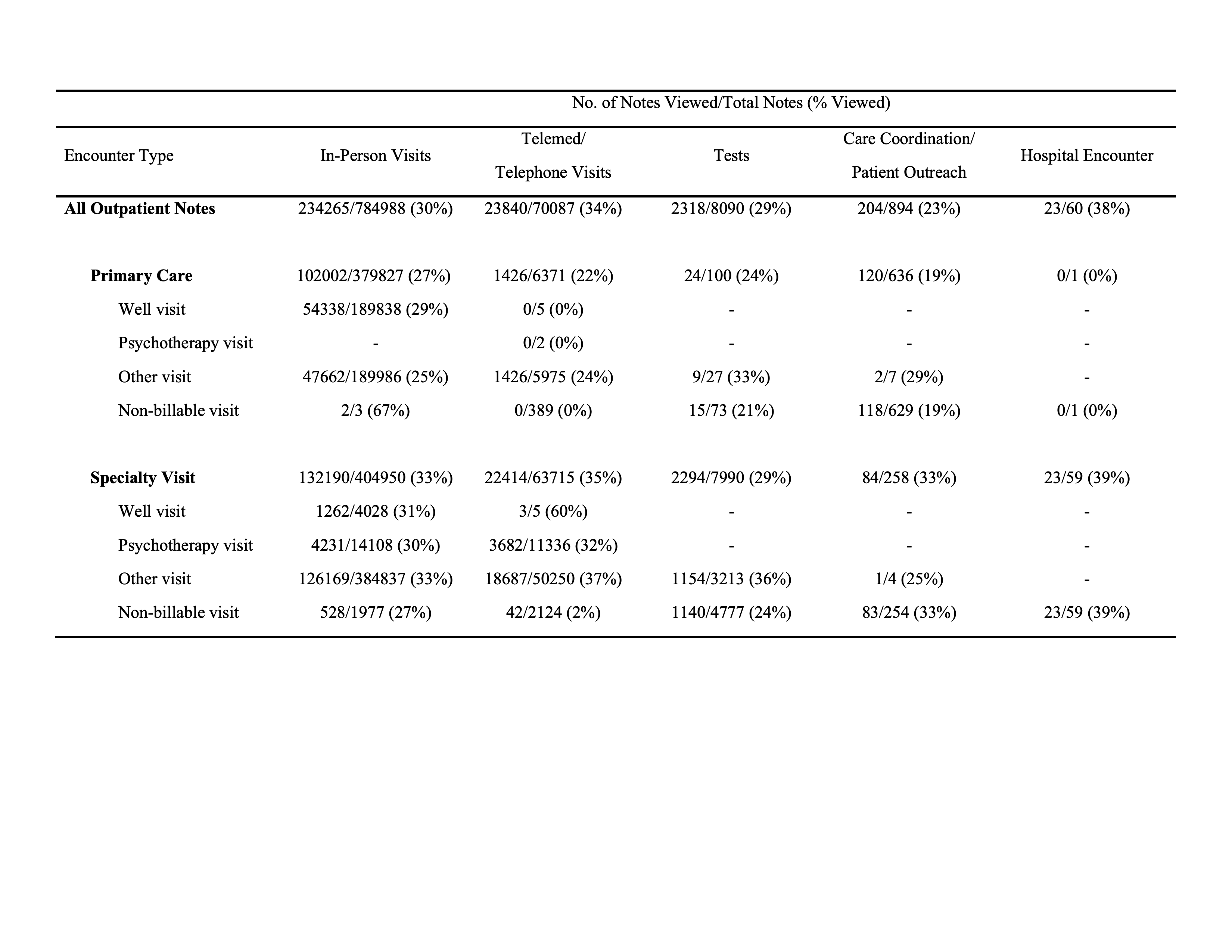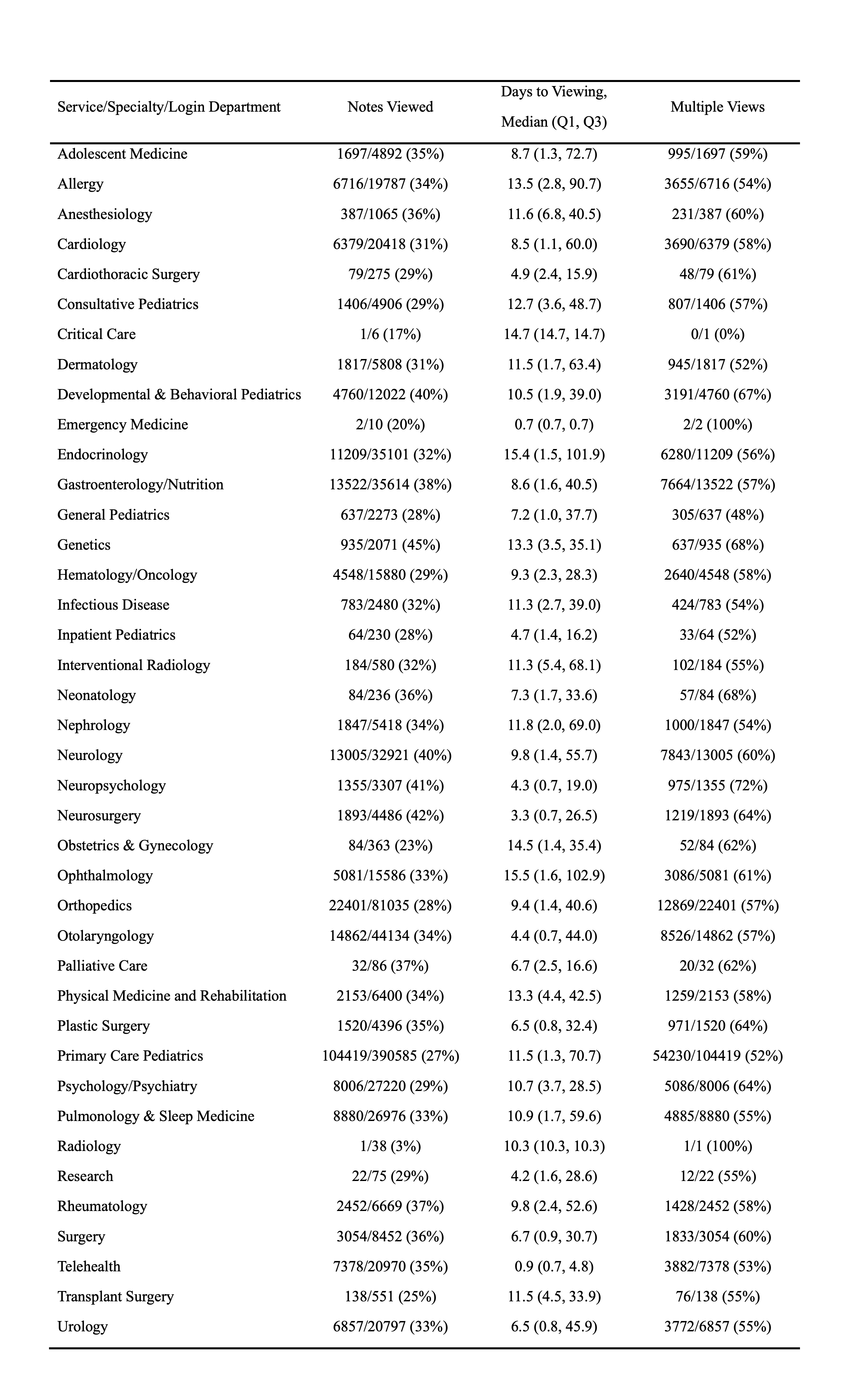Technology 3: Electronic Medical Records and Informatics
Session: Technology 3: Electronic Medical Records and Informatics
293 - Unlocking the EHR: Cracking the Code of Outpatient Note Viewing Patterns
Monday, April 28, 2025
7:00am - 9:15am HST
Publication Number: 293.6840
Michael Valente, Nemours Children's Health, Florida, Orlando, FL, United States; Samantha T. Kennedy, Nemours Children's Hospital, Orlando, FL, United States; Emily Craver, Mayo Clinic, Jacksonville, FL, United States; Sara Slovin, Nemours Children's Hospital, Wilmington, DE, United States; Gift Kopsombut, Nemours Children's Hospital, Orlando, FL, United States

Michael Valente, MD (he/him/his)
Chief Resident
Nemours Children's Health, Florida
Orlando, Florida, United States
Presenting Author(s)
Background: Since 2021, federal law mandates the release of electronic health information to patients. Access via online portals has been shown to improve parental understanding of their child’s care and strengthens relationships with physicians, but shows a “digital divide” driven by clinical and demographic factors. There is scant literature on patient note viewing patterns in the outpatient setting.
Objective: We received IRB exemption to study note viewership patterns among patients/caregivers with app access at two pediatric hospitals with multistate outpatient and specialty clinics along with telehealth capabilities. We will describe clinical characteristics associated with Portal note viewership and note viewing behavior for outpatient encounters. We hypothesize that clinical factors affect note viewership. This study aims to improve access to information for all families.
Design/Methods: Using the Epic data warehouse (Clarity), we collected data for all patients seen in outpatient settings between July 2022 and June 2023. Continuous variables were summarized using median (Q1, Q3) and categorical variables as percentages. Further statistical analysis pending.
Results: Overall, 30% (n=260,650/864,119) of all outpatient notes were viewed. Outpatient note viewership was higher for specialty than primary care encounters during both in-person visits (33% vs 27%) and telehealth visits (35% vs 22%). Genetics notes had the highest viewership (45%) and radiology notes had the lowest (3%). Emergency medicine (0.7 days) and Telehealth (0.9 days) notes had the shortest median days to viewing, while Endocrinology (15.4 days) and Ophthalmology (15.5 days) had the longest median days to viewing. Neuropsychology (72%) and Radiology (100%) notes had the highest proportion of notes that were viewed multiple times.
Conclusion(s): The findings from this study highlight differences in note viewership between primary care and specialty outpatient visits, as well as between in-person and telehealth encounters. Specialty visits and telehealth encounters showed higher rates of note viewership, suggesting these settings may offer more accessible or engaging information for patients and their families. This data underscores the need for targeted strategies to enhance note viewership in several departiments, including primary care, potentially through improved communication and education about the benefits of accessing health information. These insights can guide efforts to increase family engagement and support in managing patient care, ultimately improving health outcomes.
Notes Viewed by Encounter Type for Outpatient Visits (N=864119)

Outpatient Notes Viewed by Service/Specialty/Login Department


